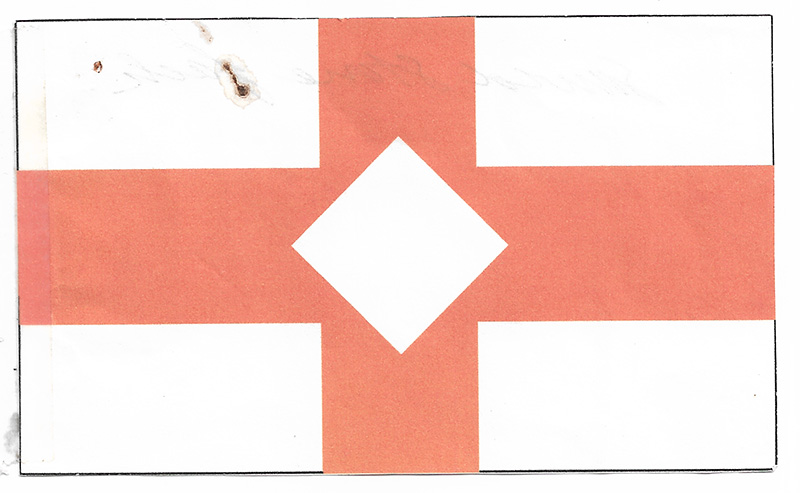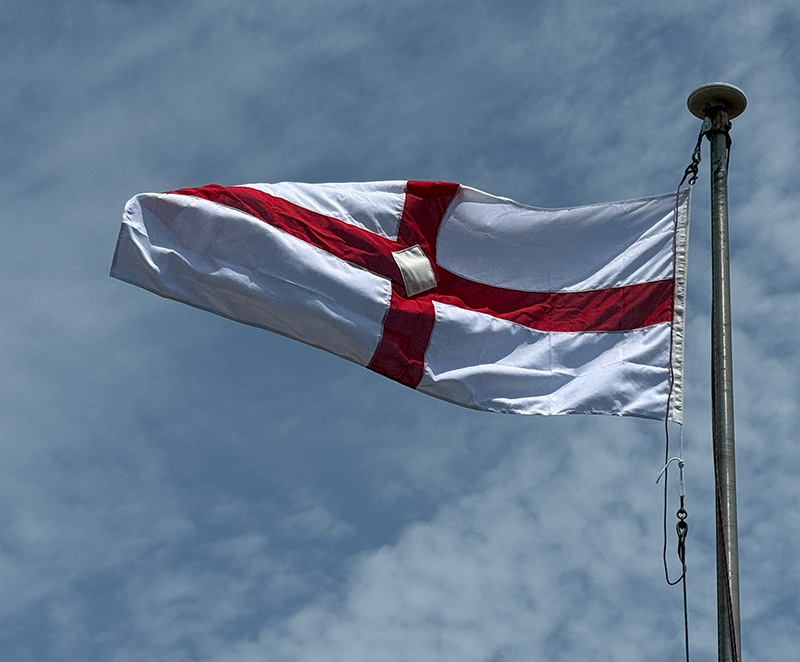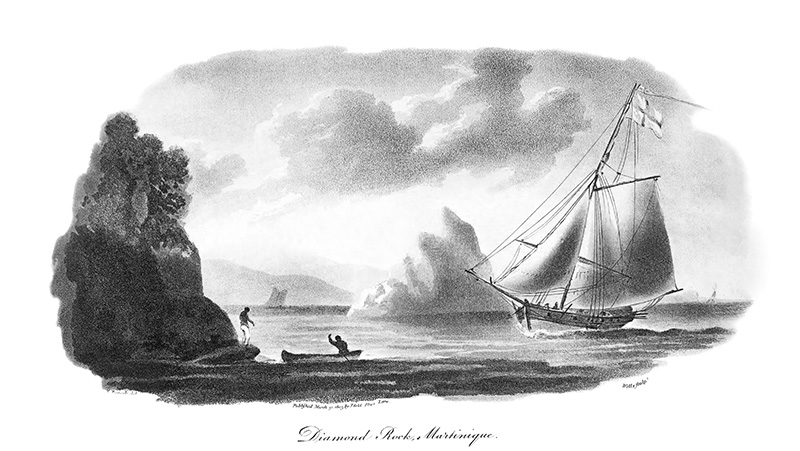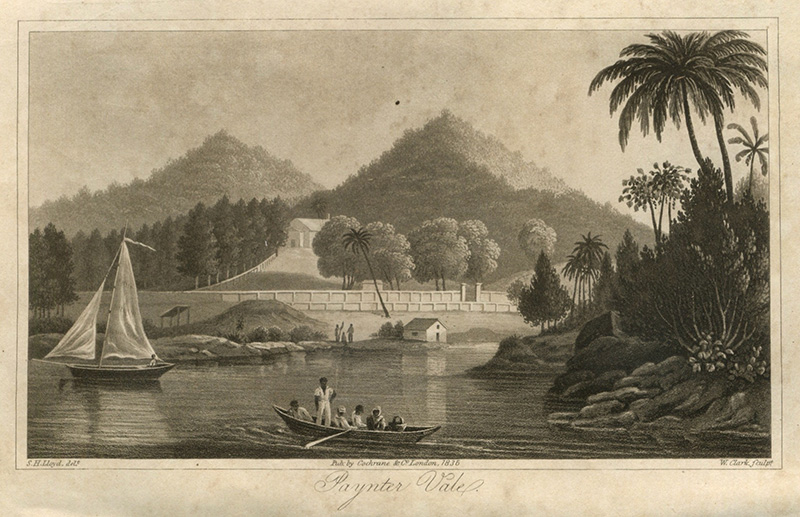Column: Dr Edward Harris On Flag, Heritage
[Written by Dr. Edward Harris]
Is this flag Bermuda’s “National Jack”?
Some years ago in the possibly unique series of 450-odd articles on Bermuda heritage, published in The Mid-Ocean News [now a victim of the digital age] and The Royal Gazette, I wrote a story about Bermudians and our connections with the Dutch island of St. Eustatius in the West Indies in the later 1700s. That article in 2006 was partly based on one published in the Gazette in March 1959, the 350th Anniversary year of the settlement of Bermuda by the English, upon the wreck of the Jamestown-bound ship Sea Venture in 1609, there being no indigenous people on this remote island.
The article in 1959 was an almost verbatim account of St. Eustatius, “Attributed to the late Captain W. H. Peniston”, as a manuscript copy of his story can confirm, and the only town was Oranjestad, now the “regional capital”, according to Wikipedia. At 8 square miles, St. Eustatius, is less than half the size of Bermuda, with a present population of a little over three thousand souls, some of whom might still share ancestry with us.
In 1853, Capt. Peniston “found many descendants of old Bermuda families”, but when I visited in the 1990s, I only found a family of Godets by name. The ship’s skipper noted that in the late 1700s: “The town was chiefly inhabited by Bermudians: Jennings, Penistons, Hills, Godets, Hyligers, Marshalls and many others, settlers from Bermuda who carried on a large and lucrative business as it was a free port.”
He goes on to mention possibly the first notice of our “National Jack”: “A great deal of Bermuda lime and building stone was imported and Bermudian vessels flew what was called the Sawed Stone Jack—a white flag with a red cross. When people saw that they knew the ship was from Bermuda with a cargo of sawn stone and lime.”
The Bermudian flag expert, Aidan Stones, when consulted recently, had this to communicate: “The Jack was of course typically flown from the bow of the ship on the Jackstaff while at anchor, but I speculate that perhaps it [Sawed Stone Jack] was flown from a foremast to be more prominent.” Stones also noted that “There were two flags readily at hand in those days, one was the Saint George’s Cross of England and the other would have been a red saltire on white which was [and still is] a signal flag.”
Since reading Capt. Peniston’s account, I have wondered what I have referred to as our “National Jack” really looked like. So you can imagine my surprise when Malcom Kirkland of the Bermuda Sloop Foundation recently posted a purported picture of it on Facebook! Upon enquiry, it transpired that he had gotten the “picture” of the Sawed Stone Jack and a typescript copy of the Peniston report from a Bermudian couple, now sadly having slipped their respective moorings.
Thus, the research trail hit a landslide, so this note is an appeal to anyone who might be able to add to the story of our possible national flag, the Sawed Stone Jack. The “National Jack” is suggested as such as it is associated with the now famous Bermuda Sloop with its revolutionary “Bermuda Rig”, a sailing technology invented here before the 1670s and now used universally: Be Proud!
The picture from Malcom Kirkland shows a Saint George’s Cross, the national flag for England, which has a white background with vertical and horizontal red bars, not diagonal cross members, such as in the saltire for Scotland. In the middle of the cross is a square block of white, laid on an angle, perhaps representing a block of sawn Bermuda limestone.
The paper image of a purported “Sawed Stone Jack”, as published by Malcolm Kirkland in early 2024.
That image is possibly the first-known of a Sawed Stone Jack, flown on Bermuda sloops in former centuries, but is it a true representation of our National Jack? Where did the Bermudian couple get the image, who drew it, and what was the evidence for its creation? The couple also had a copy of Capt. Peniston’s account, but while that tale has been repeated in other places, like the Saba Islander, in no account does it mention the white block in the middle of the flag.
The recreation of a “Sawed Stone Jack”, as created by friends at Dockyard Canvas, 9 May 2024.
Recently, I obtained an 1803 image of a Bermuda sloop off Diamond Rock, Martinique, and went back to look at its accessories. There on the mainmast, streaming astern in the wind, was a Saint George’s Cross, with its centre sadly blurred. Then I found a colour version of the same picture at the National Library of Jamaica. While a digital copy could not be obtained direct from that institution, the flag, in white and red, sadly did not have a central white block, so it was not the Sawed Stone Jack, but a typical flag indicating the English–Bermudian nationality of the vessel. As Stones intimated, the small sloops did not have a jackstaff on the bow, so the flag, as recorded in 1803, was flown on the mainmast, and a pretty sight those fleet boats must have made in a good breeze in the West Indies.
Identified in its text as a Bermuda sloop, this picture of the vessel off Diamond Rock, Martinique, in the West Indies, was published in the Naval Chronicle in March 1803.
In addition to house construction and ship building, stone quarrying and lime-burning were major occupations in Bermuda, with stone still cut today, albeit with chain saws. Other than tobacco [for a period], cedar timber, stone and lime, Bermuda did not have much else to export as cargo and the last two were of significance to some of the West Indies islands. St. Eustatius is volcanic and, unlike our fortuitous 400-foot cap of calcium carbonate atop Mt. Bermuda, does not have any limestone to cut for building blocks, or such stone to burn for lime, the cementing agent for a number of millenia for erecting buildings and great monuments.
Thus Bermuda stone and lime was a much valued cargo in the West Indies, the extent of which trade has yet to be determined, as many of the West Indies Islands are volcanic with very hard basalt rock. To the north of the Caribbean Sea, the Bahamas archipelago, including Turks and Caicos, are of very similar limestone formations to Bermuda, without obtaining the considerable height of our sand dunes and hills, later consolidated into limestone through the action of rainwater. From that stone and lime, we have a major heritage legacy of buildings from the hard limestone of the old Royal Naval Dockyard to the softer Bermuda stone of domestic houses, and a number of surviving kilns for the burning of lime, as often mentioned to audiences here by Larry Mills. Of Captain William Hubbard Peniston, it appears he was a well-loved character in Bermuda, dying in 1917 at the age of 88. His home, called “Paynter’s Vale”, no longer exists but was to be found opposite in the area known as “Shark’s Hole” in Hamilton Parish, near the Leamington Caves. The stalwart sea captain was apparently affectionately known [many Bermudians having nicknames] as “Bamboo Billy”, an appellation that, then as now, might defy definition, or be subject to misinterpretation.
Please get in touch if you can add to this story on Bermuda’s seafaring heritage: it would be wonderful to resolve the true identity of our national “Sawed Stone Jack”!
“Paynter Vale” in a lithograph by W. Clark of 1836, based on an original painting by Susette H. Lloyd.
- Dr Edward Harris





